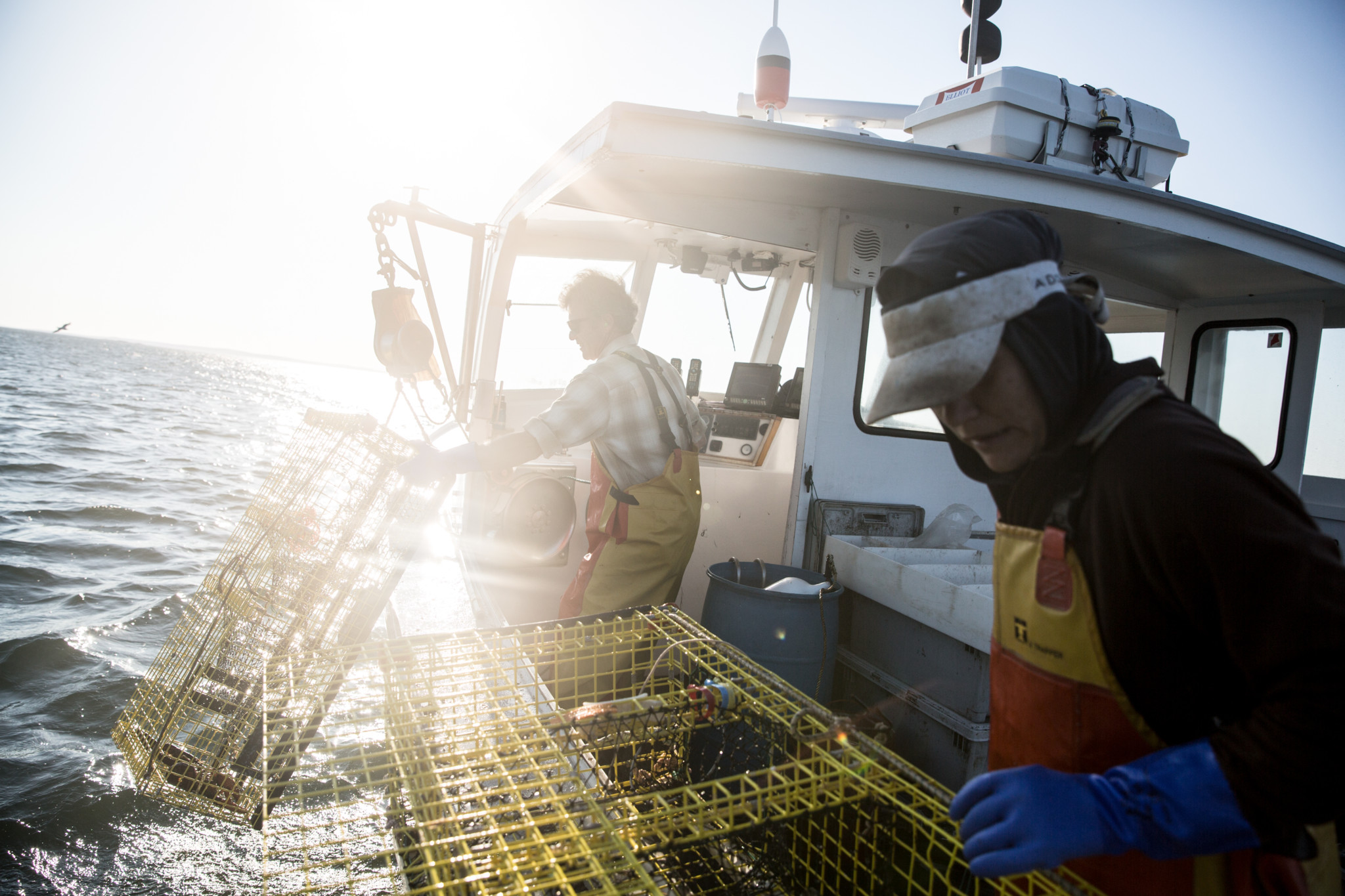As the right whale population continues to decline, lobstermen are again called on to change the way they fish
Despite an ongoing federal trade war with China imposing tariffs on seafood exports and a looming bait crisis as herring quota were slashed in the Atlantic, Maine’s lobster fleet still managed to haul in crustacean cash. The fleet landed 120 million pounds of lobster worth $484 million in 2018, the fishery’s third-highest annual value ever.

This story was first published in the August issue of National Fisherman. Subscribe today for digital and print access.
Coming off a profitable year, lobstermen might normally be energized gearing up for the peak summer and fall — but the latest news in the industry’s labored relationship with the Atlantic’s endangered right whale population had them focused on the future of their livelihood instead of the upcoming summer.
In April, NOAA informed the industry that in order to reduce mortality and serious injury to right whales, the U.S. fishing industry would need to reduce risks to whales by 60 to 80 percent throughout New England.
To reach those goals, fishing stakeholders on the federal Atlantic Large Whale Take Reduction Team agreed to attempt a drastic measure: significantly reducing the number of vertical lines used by the region’s lobstermen.
In Maine, where thousands of small-scale lobstermen catch the majority of the U.S. lobster haul, that means reducing vertical lines in the water by at least 50 percent.
“Maine agreed to a 50 percent reduction in vertical lines because it is the only sure way to meet this goal, and it allows the industry to have the flexibility to weigh in on how this is achieved,” said Patrice McCarron, executive director of the Maine Lobstermen’s Association. “NMFS has been clear that is the standard that must be reached and has been clear that they will implement measures to achieve that if the states or lobster fishing areas do not come up with their own plan.”
The 64-member take reduction team — established in 1996 under the Marine Mammal Protection Act — includes East Coast fishermen and associations representing fixed-gear fisheries, fishery managers, environmental organizations and scientists. While these partners have been working to reduce risks to Atlantic whale populations for more than two decades, entanglement mortalities and injuries have continued to exceed acceptable levels. A draft stock assessment of the North Atlantic right whale population in 2018 set a potential biological removal level of 0.9, or a minimum rate at which whales can be removed from the stock or seriously injured annually for it to be on a healthy trajectory — less than one whale a year. According to that same report, from 2012 to 2016 the incident rate was 5.15 whales per year.
“The modest upward trajectory of the population through the early 2000s appears to have reversed since 2010,” said Colleen Coogan, coordinator for the take reduction team. “This downward trend, exacerbated by unprecedented mortalities, particularly in the Gulf of St. Lawrence snow crab fishery, in 2017, lends a new urgency to the take reduction team’s continued collaboration to modify our plan.”
Since October, the team has been evaluating a variety of proposals that could reduce risk while remaining operationally viable for the fishery, including simplifying surface gear, a reduction in end-lines, regular area closures and ropeless fishing. Each concept was analyzed by researchers at NOAA’s Northeast Fisheries Science Center to determine ultimate risk reduction for each plan.
To read the full article, subscribe to National Fisherman today for digital and print access.







